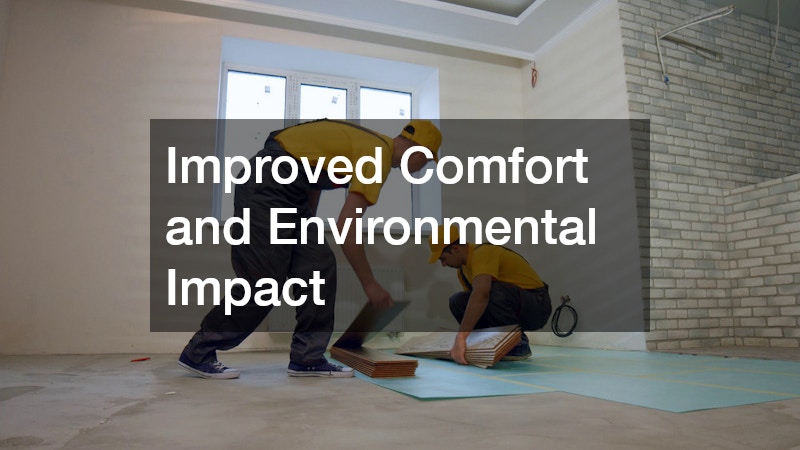Whether you’re a homeowner looking to improve your home’s energy efficiency or a professional contractor seeking the latest techniques, this article will provide comprehensive insights tailored for you. Understanding the various options and services available can make a significant difference in selecting the most effective solutions for your unique requirements.
Different Types of Insulation Materials Available
Overview of Common Insulation Materials
The many different types of popular insulation materials include fiberglass, cellulose, spray foam, and rigid foam board insulation. Fiberglass is widely used for its cost-efficiency and availability in different forms suitable for various applications. Cellulose, made from recycled paper products, is an environmentally friendly option known for its good thermal performance and soundproofing qualities.
Spray foam insulation offers superior air sealing and high R-values, making it an excellent choice for areas prone to air leaks. On the other hand, rigid foam board insulation is ideal for foundation and basement walls due to its ability to resist moisture. Each of these materials offers distinct advantages tailored to specific requirements, helping to achieve optimal insulation performance.
Understanding these materials involves considering their properties and the insulation needs of your home. An informed decision between different materials depends greatly on the specific applications and environmental considerations. For instance, spray foam, despite its higher upfront costs, may prove cost-effective through energy savings in the long run.
Comparing the Efficiency and Cost of Insulation Materials
Fiberglass is generally more affordable than spray foam but may require additional sealing to maximize efficiency. In contrast, spray foam provides excellent coverage and minimizes air leaks, contributing to energy savings.
The cost of cellulose insulation is competitive, and its use of recycled materials makes it a sustainable choice. However, installation may be more labor-intensive compared to other options. With rigid foam boards, the high R-value contributes to excellent thermal resistance, though the initial investment might be higher.
Factors such as local climate, building structure, and energy goals play a crucial role in determining the most suitable insulation material. By weighing the initial expense against long-term savings and environmental benefits, homeowners and contractors can make informed decisions. In many cases, the higher initial cost of premium materials is offset by significant reductions in energy expenditures over time.
Choosing the Right Local Insulation Service
Evaluating Professional Experience and Expertise
Learn how to assess the qualifications, experience, and reputation of local insulation service providers. Begin by researching online reviews and verifying credentials to ensure the company’s expertise aligns with your project needs. A reputable service provider should have relevant certifications and a track record of successful installations.
Ask for referrals from friends or family members who have previously undertaken similar projects. Pay attention to feedback regarding timeliness, professionalism, and quality of work delivered. Researching the company’s history and areas of specialization further assures you’re selecting a reliable service.
An effective way to gauge their expertise is by consulting each provider on potential insulation solutions tailored to your needs. Evaluate their willingness to discuss different materials and techniques, demonstrating a comprehensive understanding of the field. Choosing a provider capable of offering customized solutions can significantly enhance the effectiveness of insulation.
Understanding Quotes and Service Agreements
Understanding the terms of service, cost estimates, and what to expect from a professional insulation service can be challenging. Start by requesting detailed quotes from multiple providers to compare pricing structures and included services. Ensure that the quote breaks down labor, materials, and additional fees clearly.
Service agreements should outline the scope of work, timeline, and responsibilities of both parties. Carefully review the warranty conditions offered for both materials and labor to protect your investment. If discrepancies arise, seek clarifications to prevent misunderstandings as work progresses.
Open communication with your chosen service provider fosters trust and ensures alignment with your expectations. Agreeing on milestones and payment schedules aids in monitoring progress and maintaining efficiency. Understanding these categories allows you to attain the best value while mitigating any potential risks during the project.
The Benefits of Proper Home Insulation
Energy Efficiency and Cost Savings
Explore how proper insulation contributes to reducing energy consumption and lowering utility bills. By creating a consistent thermal barrier, insulation minimizes temperature fluctuations, reducing the load on HVAC systems. Consequently, your home maintains comfortable temperatures year-round with less energy required.
High-quality insulation improves your home’s ability to retain heat during winter and stay cool during summer. This efficiency translates into substantial reductions in monthly energy expenses, providing significant cost savings. The initial investment in insulation quickly justifies itself through lower utility bills.
Improved Comfort and Environmental Impact
Discover how insulation enhances indoor comfort and its role in promoting sustainability. Effective insulation dampens external noise while maintaining a comfortable indoor atmosphere, contributing to a more pleasant living environment. Ensuring even temperatures across your home eliminates uncomfortable cold drafts.
Additionally, proper insulation significantly reduces your carbon footprint by lowering energy usage and emissions. Materials such as cellulose and spray foam align with sustainable practices, emphasizing the conservation of natural resources. The construction of energy-efficient homes ultimately supports environmental preservation efforts.
Understanding local insulation services and making informed decisions can significantly impact your home’s comfort, utility costs, and environmental footprint. By considering the types of materials available, choosing the right service provider, and understanding the benefits of proper insulation, you will be well-equipped to enhance your living environment sustainably and economically. Investing in quality insulation is a step towards a more efficient, comfortable, and eco-friendly future.

